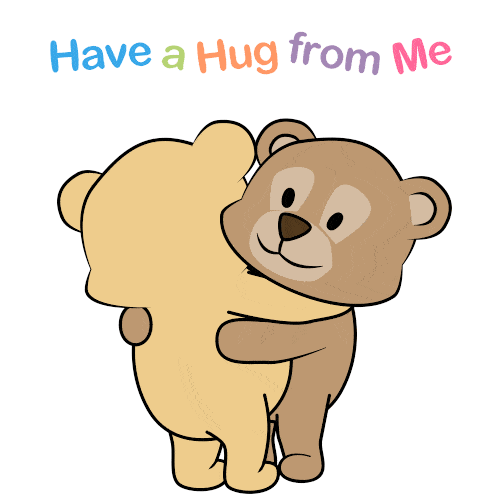Touch after Childhood
The Lasting Importance of Touch
Touch is important for everyone, and certainly not just for babies and small children. Even as children grow up, physical contact continues to play a very important role in their development. In this article, we will discuss why touch is still so important for children and teenagers, even after childhood.
Touch & Emotional Development
Touch after childhood
Physical contact is a powerful tool to show feelings. Just think of a hug, a hand on the shoulder or a high-five. By touching each other, children show that they like someone, want to comfort someone, or are happy to see someone. It helps them to strengthen friendships and feel connected to others.
When a child notices that touch is something pleasant, they feel loved and safe. It can also make it easier to form new friendships or open up to others. A simple hug from a parent or friend can make a big difference, especially if a child is not feeling well.
Building trust & security
Touch after childhood
Especially with young children, touch is important to build a sense of security and trust. If parents and caregivers regularly touch their child lovingly, such as by giving them a hug or stroking their head, the child knows that they can always count on them. This sense of security helps a child to explore the world more confidently. They dare more, because they know that there is always someone who is there for them.
Better social skills through touch
Touch after childhood
Children who experience positive touch often have better social skills. A child who is often hugged when he is sad or receives a comforting hand on the shoulder learns that others care about him. As a result, the child feels loved and learns better to comfort or help others. This is also called “prosocial” gedrag” genoemd, zoals het tonen van zorg voor anderen en vriendelijk zijn tegen leeftijdsgenoten.
Children who have a lot of physical contact, for example through play or sports, are better able to deal with their emotions and often feel more comfortable in social situations. This helps them to be more loving and kinder to others themselves.
Touch & Cognitive Development
Touch after childhood
Touch remains important for the development of the brain even at a later age. Children learn by feeling. They discover different materials, textures, and shapes by touching things. Not only does this help them understand the world better, but it also contributes to the development of their motor skills, such as learning to grasp things or refine movements.
With young children, touching things is an important way to learn. Think, for example, of building with blocks or drawing with pencils. These types of activities not only help to think creatively but also to develop skills that will be needed later, such as writing. By practicing these fine motor skills, children learn their hands and eyes to work better together, which in turn helps with their school tasks.
Physical Health & Touch
Touch after childhood
Touch not only contributes to emotional and cognitive development, but is also good for physical health. Children who engage in physical activity on a regular basis, such as dancing, playing sports, or other activities that involve touch, often have better coordination and stronger bodies. In addition, it also helps to improve their balance and they can learn to move more easily in a controlled way.
But touch can also help to reduce tension and stress. For example, if a child is tense due to a difficult situation, a reassuring touch from a parent or caregiver can do wonders. It gives the child the feeling that they are not alone and that someone is there for them. This can reduce stress and make the child feel calmer and safer.
Learning about boundaries & respect
Touch after childhood
As children get older, it’s important that they also learn about personal boundaries. Not every child likes to be touched just like that, and that’s totally okay. By teaching children about the importance of consent, they learn to be respectful of others. They understand that it’s important to first ask if someone wants a hug, or if someone might prefer not to hold hands. This helps them to be aware of touch and to respect other people’s boundaries.
It is just as important that children learn to set their own boundaries. They can say ‘no’ if they don’t like something. This strengthens their self-confidence and helps them to clearly guard their own wishes and boundaries later in life.
The importance of touch in everyday life
Touch after childhood
In everyday life, touch is much more than a simple gesture. It helps children feel loved, safe, and confident. It contributes to their social skills, helps them to learn better and ensures healthy physical development.
It is therefore important for parents and educators to continue to encourage touch. A hug when a child is sad, a high-five after winning a game, or an encouraging hand on the back can all contribute to a child’s well-being. It’s not about big gestures, but rather about the small moments of touch that make a child feel seen and loved.
Activities that promote touch
Touch after childhood
There are many ways to integrate touch into children’s lives in a positive way. Sports, dancing, or other forms of play in which children work together help them to be physically engaged and engage with touch in a playful way. Building together with blocks or a drawing activity where they work with their hands can also help develop their motor skills.
In addition, simply reading aloud or sitting together on the couch, with a child leaning against a parent, can already be a form of touch that has a lot of value. These moments strengthen the bond between parent and child and give the child the feeling of comfort and security.
Conclusion
Touch after childhood
Touch is not only important for babies and toddlers, but also remains very important after childhood. It plays an essential role in children’s emotional, social, and cognitive development. Physical contact helps children feel loved and safe, improves their social skills, and supports their physical and mental growth.
Parents, caregivers and educators must therefore ensure that children experience enough positive touch. This can be done in all kinds of ways, from a cuddly toy to playing or exercising together. In this way, we ensure that children can develop healthily and happily in all areas. Because touch is and remains a powerful tool to help children flourish.








